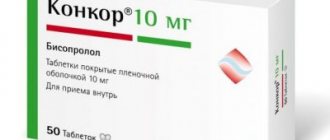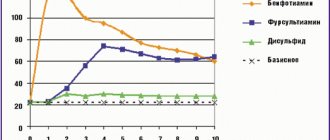Home — For the public
- Map of medical organizations
- Vaccination
- Clinical examination
- Fluorography
- Addresses and opening hours of clinics
- Emergency rooms
- Oncology
- Where to take an HIV test
- Healthy child's office
- Services
- Prevention of CVD
- Disease Prevention
- World Patient Safety Day
- Newspaper "Medical News"
- specialist
- School of Health
— Disease prevention
- HIV infection
- All about vaccination
- All about proper nutrition
- Hepatitis
- Flu
- Dementia
- Schoolchildren's health
- STD
- Tick-borne encephalitis
- Whooping cough
- Measles
- Legionellosis
- Meningococcal infection
- Oncology
- Acute intestinal infection
- Pediculosis
- First aid
- Pneumococcal infection
- Pneumonia
- Prevention of rabies
- Dependency Prevention
- Rotavirus infection
- Diabetes
- Cardiovascular diseases
- Injuries
- Tuberculosis
- Tularemia
- Physical activity
- Obstructive pulmonary disease
- Exotic infections
- Ecology
- Why is swimming in ponds dangerous?
— Cardiovascular diseases — What are cardiovascular diseases?
Cardiovascular diseases (CVD) are a group of organic and functional pathologies of the circulatory system (heart, arteries, veins). Cardiac disorders can be suspected by pain and a feeling of heaviness in the chest, shortness of breath, uneven heart rhythm, and rapid heartbeat. When the vessels of the head and neck are damaged, headaches, tinnitus, and fainting may occur. Peripheral vascular diseases are accompanied by pain in the legs, swelling, and lameness. Most CVDs are extremely life-threatening; if their symptoms appear, you should immediately contact a cardiologist or therapist - he will refer you to the right specialist.
Epidemiology
Cardiovascular (CV) diseases are a serious health problem worldwide due to their high prevalence and high mortality rate. In the world, about a third of all deaths occur from diseases of the circulatory system (85% of them due to heart attack or stroke), more than 75% occur in countries with low and medium levels of economic development. In Russia, the incidence of CVD is more than 19% in the structure of all diseases, mortality is 50%. Experts from the World Health Organization (WHO) predict a further increase in morbidity and mortality from CVD.
People of retirement age are more susceptible to vascular and heart diseases, but over the past decades these diseases have become significantly younger. Thus, coronary heart disease is often first diagnosed at the age of thirty, and from the age of forty it becomes the cause of premature death. Morbidity statistics show that in men the incidence and mortality from cardiovascular pathologies is 1.5 times higher than in women.
Nutrition to prevent heart disease
In order to ensure effective prevention of cardiovascular diseases, it is necessary to ensure a balanced diet. In this case, the best solution would be split meals in small portions 4-5 times a day; this is much healthier for the heart than two dense meals of large quantities of food. You should have dinner no later than 3 hours before going to bed.
If you are already overweight, you should adhere to a low-calorie diet, but calorie restriction should not be very strict. You can’t go hungry: a sharp restriction of the body’s diet leads to a deficiency of nutrients, including for the heart muscle.
Basic principles of nutrition for the prevention of heart disease:
- limiting “fast” carbohydrates - sugar, baked goods, sweets; preference should be given to dried fruits, honey, whole grain bread;
- The consumption of animal fats is limited; it is better to give preference to olive and flaxseed oil. It is better to exclude palm and coconut oil;
- limit the consumption of caffeinated drinks;
- salt consumption is limited, it is better to exclude sausages and smoked meats, pickles;
- It is better to completely eliminate the consumption of alcoholic beverages;
- from meat it is better to choose lean veal, chicken, rabbit, turkey;
- nuts, flax seeds, sesame are useful;
- It is recommended to consume large amounts of fiber in the form of vegetables, fruits, and herbs;
- healthy sea fish and seafood, fish oil in the form of supplements;
- It is recommended to consume fermented milk products daily, which stimulate digestion and saturate the body with calcium.
- Fast food, semi-finished products, products with an abundance of flavor enhancers and preservatives should be completely abandoned.
Dishes should be boiled, baked, steamed. It is recommended to completely exclude fried foods. It is necessary to drink a sufficient amount of liquid - up to one and a half to two liters per day. At the same time, strong tea or coffee should be avoided, preferring still mineral water, herbal tea, compote, fruit juice.
Classification of CVD
The most common, socially significant CVDs include:
- Hypertension is a persistent increase in blood pressure.
- Atherosclerosis is the blocking of the arterial lumen by cholesterol plaques. Damage to the coronary vessels leads to coronary heart disease, the arteries of the head and neck to ischemia (lack of blood supply) to the brain, and large arteries of the legs to ischemia of the limb.
- Coronary heart disease is a disorder of the blood supply to the myocardium caused by obstruction (narrowing of the lumen) of the coronary arteries. The acute form of the disease is myocardial infarction.
- Cardiac arrhythmias are disturbances in heart rhythm and conduction.
- Inflammatory heart diseases are lesions of an autoimmune or infectious nature that affect the pericardial sac, muscle layer or internal connective tissue lining of the heart - pericarditis, myocarditis, endocarditis, respectively. Rheumatic carditis is most often recorded.
- Cerebrovascular pathologies are diseases of the blood vessels of the brain. An acute form of circulatory disturbance in the great vessels of the head and neck is ischemic stroke (cerebral infarction). If the integrity of the vascular wall is damaged or incompetent, a hemorrhagic stroke (bleeding in the brain) develops.
- Thromboangiitis obliterans is a progressive closure of the small arteries of the legs (first due to spasm, then associated thrombosis), accompanied by ischemia of the limb.
- Venous thrombosis and pulmonary embolism (PE) are complete or partial closure of the lumen of the veins or the main artery responsible for the blood supply to the lungs with a blood clot.
Significantly less common:
- congenital and acquired heart defects;
- heart tumors;
- systemic vasculitis;
- thromboembolism of the arteries of the systemic circulation (peripheral, mesenteric and others).
Physical activity to prevent heart disease
Modern man is becoming less and less mobile: work, thanks to the automation of processes, requires less and less effort, transportation takes him to his place of work, even laundry, washing dishes, turning on the TV no longer require real physical activity. Sedentary weekdays flow into similar weekends spent watching TV. This lifestyle contributes to excess weight gain and poor blood circulation in the tissues. In order to avoid developing heart disease, you need to increase physical activity. The best solution would be reasonable exercise in the fresh air - walking, Nordic walking, skiing, cycling. Cardio exercises in the gym (exercise bike, treadmill) are also useful. Swimming and gymnastics have proven themselves well.
An important condition for such physical activity: it should not be excessive and should not provoke overwork.
At the same time, it is important that the loads be regular: it is much better to walk 2-3 km every day, that is, half an hour, than to arrange a grueling two-hour session in the gym.
Causes of CVD development
Damages of the heart and blood vessels are multifactorial pathologies - they arise against the background of several predisposing conditions. The main cause of the vast majority of cardiac and cerebrovascular pathologies is an increase in the level of low-density lipoproteins (LDL) in the blood. An increase in their concentration leads to excess cholesterol, which forms plaques on the walls of blood vessels, narrowing their lumen.
An important role in the development of CVD is played by hereditary predisposition - those at risk are those whose immediate relatives (brothers, sisters, parents) have the corresponding disease. The likelihood of developing cardiovascular pathologies is increased by diabetes mellitus, kidney and thyroid diseases, infections (most often streptococcal - sore throat, scarlet fever, erysipelas, impetigo). In women, the triggering factor is conditions accompanied by hormonal changes: more often - menopause, less often - pregnancy.
The leading risk factors include lifestyle features and their adverse consequences:
- Physical inactivity. A sedentary lifestyle negatively affects the condition of the vascular walls and myocardium, increases the risk of thrombosis, and contributes to the occurrence of excess weight and diabetes.
- Diet errors. Increased salt consumption increases the risk of hypertension, excess sweets in the diet leads to diabetes, obesity, and increases LDL levels. Abuse of animal fats contributes to the development of atherosclerosis. Lack of proteins, microelements (potassium, magnesium, iron, copper, zinc, selenium), most vitamins negatively affects the condition of blood vessels and the heart, and myocardial function.
- Psycho-emotional stress. Acute stress is accompanied by the release of adrenaline, which increases the load on the heart, which can lead to myocardial infarction. Chronic stress is accompanied by increased levels of cortisol, which slows down the production of growth hormone. Deficiency of this hormone in adults indirectly provokes the development of CVD.
- Excess body weight is usually a consequence of the influence of the factors listed above. Obesity is a favorable condition for the occurrence of thromboembolism, increases LDL levels, and creates additional stress on the heart and blood vessels.
- Bad habits. Each episode of alcohol abuse leads to a decrease in the contractile function of the myocardium and impairs blood circulation. Tobacco smoking leads to increased blood pressure, provokes blood clots, the formation of atherosclerotic plaques, and increases the risk of arrhythmia.
Often one primary CVD leads to the development of another. Thus, atherosclerosis and arterial hypertension are the main causes of coronary heart disease, rheumatic carditis often leads to acquired defects, cardiac arrhythmias, and heart rhythm disturbances lead to thromboembolism of the arteries supplying blood to the limbs and internal organs.
Primary and secondary prevention of heart and vascular diseases
Rational prevention of cardiac pathology is always comprehensive. It should include rationalization of nutrition, physical activity, stress management, giving up bad habits, and regular medical examinations. All of these measures can be classified as primary prevention measures, which are taken when the risk of heart disease is low. In the presence of pronounced predisposing factors to heart disease, it is necessary to use secondary prevention measures. Among them are weight loss, normalization of cholesterol and blood sugar levels, lowering blood pressure, and normalizing heart rate.
Symptoms of Cardiovascular Diseases
Diseases of the heart and blood vessels in the initial stages are often asymptomatic and can manifest acutely - manifestations of a heart attack or stroke. The debut (or exacerbation of chronic pathology) is often preceded by nervous shock, overwork, physical exertion, and overeating. Most heart pathologies are accompanied by heart failure.
Symptoms of heart disease:
- Acute heart failure - cold sweat, sudden loss of strength, severe suffocation, cough with foam (a sign of pulmonary edema), cyanosis of the skin (cyanosis)
- Chronic heart failure - fatigue, poor exercise tolerance, shortness of breath, suffocation, dry cough (sometimes hemoptysis), scanty urination, edema, ascites.
- Myocardial infarction - acute chest pain radiating to the left shoulder, upper back, neck, chin (sometimes intense abdominal pain); shortness of breath, severe weakness, cold sweat; feeling of anxiety, fear of death.
- Rheumatic carditis – increased sweating, fever, signs of heart failure.
- Cardiac arrhythmia - palpitations, a feeling of “fading” of the heart, dizziness, fainting, manifestations of heart failure.
Signs of vascular pathologies:
- Arterial hypertension - heaviness, pain, pulsation in the back of the head; lethargy, dizziness, tinnitus, nausea; sensation of “floaters” before the eyes.
- Stroke - can begin gradually, with a weakening of muscle tone, numbness of certain areas of the face and limbs. Then lethargy and loss of sensitivity intensify to paresis, and the affected areas expand. Impairments in hearing, vision, speech, and coordination of movements may develop. General cerebral symptoms – nausea, vomiting, confusion, coma.
- Chronic cerebrovascular accident - attacks (transient ischemic attacks) are accompanied by more pronounced signs of arterial hypertension, transient disturbances in speech, hearing, vision, memory, unsteadiness of gait, and fainting. Symptoms disappear within 24 hours.
- Pathologies of peripheral arteries accompanied by ischemia (thromboembolism, thromboangiitis obliterans and atherosclerosis) - acute, unbearable pain, transient lameness, dry skin, change in its shade (at first pale, as it progresses - purple), the appearance of poorly healing ulcers.
- Deep vein thrombosis - a feeling of bursting pain in the affected limb, swelling, cyanosis of the skin, visible vascular network.
- PE – may combine signs of heart failure and stroke. Other symptoms are fever, pain in the right hypochondrium, skin rashes.
Acute CVD requires emergency medical care and intensive care. If you suspect these pathologies, you should immediately call an ambulance.
How to distinguish heart pain from neuralgia
Heart pain is often confused with neuralgic pain. Among the main characteristic symptoms of neuralgia are the following:
- the ability to determine a clear localization;
- unpleasant sensations are concentrated at one point;
- the nature of the pain is shooting, aching or stabbing;
- lasts for several days;
- the intensity of sensations does not depend on the time of day;
- worsens with twisting, sneezing or coughing, walking, palpation of intercostal areas;
- nitroglycerin is ineffective;
- the ability to breathe only superficially;
- often occurs after hypothermia;
- accompanied by impaired sensitivity of the skin;
- in the affected area, motor activity is significantly reduced.
Complications of CVD
According to WHO, cardiovascular pathologies are the main cause of death and often lead to disability. Death is not uncommon with large heart attacks and strokes, massive pulmonary embolism, heart failure complicated by pulmonary edema, and cardiogenic shock. A stroke can lead to a wide range of neurological disorders, and chronic cerebrovascular accident can lead to progressive cognitive impairment. Peripheral arterial pathologies are dangerous due to the development of gangrene with subsequent amputation of the limb (often at a young age). CVDs have a detrimental effect on the state of the reproductive sphere: impotence is often registered in men, and infertility and childlessness in women.
Herbal medicine for the prevention of heart disease
Herbal medicines and various traditional medicines are available to everyone. It is important to remember that herbal remedies are only good as part of comprehensive prevention - they cannot replace a balanced diet or quitting smoking. In addition, individual intolerance or contraindications may also occur to herbal remedies. Among the “folk” remedies for the heart are:
- garlic - it should be consumed raw with food, as well as in the form of tincture, garlic oil;
- chokeberry, ground with honey;
- a mixture of persimmon and turnip juices with honey;
- a mixture of radish, carrot, beet juices with honey;
- a mixture of carrot juice with vegetable oil;
- a mixture of honey and royal jelly;
- hawthorn in the form of tea, tincture.
Diagnostics
The diagnosis of pathology of the heart or blood vessels is established based on the results of a clinical examination, a patient interview, and a number of instrumental and laboratory tests. The main instrumental methods used in the diagnosis of CVD:
- Electrocardiography (ECG) is an electrophysiological method used in the diagnosis of arrhythmias and myocardial infarction. A variation is Holter monitoring, which allows you to take readings throughout the day using a portable device.
- Echocardiography (EchoCG) is an ultrasound method of examining the heart that reveals both functional disorders and structural disorders (tumors, vegetations, defects, inflammation). It is also prescribed for suspected pulmonary embolism.
- MRI, CT (magnetic resonance, computed tomography) of the brain - used in the diagnosis of strokes.
- Ultrasound scanning and dopplerography of blood vessels - used in the diagnosis of chronic cerebrovascular accidents and peripheral vascular diseases.
Laboratory tests include:
- In the diagnosis of inflammatory heart diseases - biochemical study of the protein spectrum, general blood test, bacterial blood culture.
- In the diagnosis of atherosclerosis - a biochemical test for the level of cholesterol, LDL, triglycerides.
- If any CVD is suspected, a coagulogram is performed.
Modern equipment allows diagnosis without invasive procedures.
Preventing heart disease in older people
Natural age-related changes in the body inevitably affect the cardiovascular system. The walls of blood vessels lose their elasticity, atherosclerotic plaques appear on them, blood pressure rises, and blood flow decreases. The risk of thrombosis of peripheral vessels increases, including coronary (myocardial infarction), brain (ischemic stroke), retina (blindness), etc. Therefore, in old age, it is especially important to regularly visit a cardiologist - at least once every six months starting from 40-50 years.
In addition to examining a doctor, it is recommended to:
- ECG, including with stress (for men);
- blood test for lipids;
- coagulograms.
In addition, you need to regularly monitor your blood pressure using a household tonometer.
Treatment
Depending on the type of pathology, treatment is carried out under the guidance of a cardiologist, neurologist, vascular surgeon, neurosurgeon, cardiac surgeon, phlebologist, rheumatologist. Emergency conditions require the help of a resuscitator. There are conservative and surgical methods for treating CVD.
Conservative methods include:
- drug therapy – medications are prescribed depending on the diagnosis;
- plasmapheresis, autohemotransfusion - in the treatment of rheumatic carditis;
- thrombolysis – dissolution of a blood clot during arterial embolism;
- physiotherapy – in the treatment of chronic cerebrovascular accidents, thromboangiitis obliterans.
Surgical methods for treating CVD:
- thromboembolectomy – surgical removal of a blood clot in case of ineffectiveness or contraindications to thrombolysis;
- thrombectomy – for deep vein thrombosis;
- stenting of peripheral vessels and coronary arteries – for atherosclerosis,
- heart valve replacement – for endocarditis;
- stereotactic aspiration of hematoma – for hemorrhagic stroke.
Today, open surgical interventions are rarely performed; preference is given to vascular surgery - this contributes to the speedy recovery of the patient and minimization of postoperative complications. However, after treatment of severe CVD, patients most often require long-term rehabilitation.
What classes is heart failure divided into?
There are several classifications of heart failure:
- Classification according to V. Kh. Vasilenko, N. D. Strazhesko, G. F. Lang;
- Classification of acute heart failure according to the Killip scale;
- And the most common is the New York Heart Association classification.
According to the New York Heart Association (NYHA) functional classification, heart failure is classified into classes I-IV depending on the severity of symptoms and limitation of physical activity.
Heart failure is divided into four classes depending on the severity of symptoms:
- NYHA I: heart disease without any restrictions on physical activity. Normal activity does not cause increased fatigue, palpitations, or difficulty breathing.
- NYHA II: Heart disease causing moderate limitation in daily activities. No symptoms at rest.
- NYHA III: Heart disease causing marked limitation in daily activities. Simple activities such as brushing your teeth, eating, or talking cause fatigue, palpitations, or difficulty breathing. There are no symptoms at rest.
- NYHA IV: Heart disease that causes symptoms at rest (and with any degree of light physical activity).
Heart failure significantly reduces quality of life. Patients often experience great frustration with physical limitations and tend to withdraw from social life. For this reason, psychological disorders such as depression are often present in addition to the expected physical symptoms.
Proper nutrition and lifestyle
Trans fats are fats containing trans isomers of unsaturated fatty acids. They are naturally present in small quantities in the meat and milk of ruminants. They are produced from vegetable oils using a special treatment method - hydrogenation: hydrogen is passed through liquid vegetable oil heated to high temperatures. The result is a solid fat mass that is resistant to oxidation. It is used to make margarines, confectionery and cooking fats, which are used to improve the taste and extend the shelf life of food products. Because these fats are cheap and easy to use, they are found in almost all industrially produced foods. Trans fats can also be formed during deep frying. Hydrogenated vegetable fats have recently been frequently introduced into many food products and are completely unjustifiably advertised as dietary fats. These fats behave in the human body like real fats of animal origin - they increase cholesterol levels and accelerate the aging process of the arteries. This type of fat is used to prepare products such as corn flakes, potato chips, and they are used in semi-finished products - pizzas, battered products, muffins, cookies, and candies.
When reducing the fat content in food, it is important not to exclude from the diet “heart-healthy” fats (mono- and polyunsaturated fats), mainly found in vegetable fats and seafood (fish oil).
How to change the ratio of fats in your diet:
- Use butter and spreads (butter substitutes) sparingly
- Choose lean meat
- Use grilling, steaming or baking meats. Avoid frying.
- Replace saturated fats such as butter with unsaturated oils such as sunflower, canola or olive oil
- Limit consumption of trans fats (such as margarine) for cooking
- Eat fatty fish (eg sardines, mackerel, fresh tuna, salmon)
Essential fatty acids (Omega-3, Omega-6). Previously known as vitamin F. Vitamin F is important for the cardiovascular system: it prevents the development of atherosclerosis, improves blood circulation, and has cardioprotective and antiarrhythmic effects. Polyunsaturated fatty acids reduce inflammatory processes in the body and improve tissue nutrition. Essential fatty acids are found in fatty fish. For heart health, you need to eat two servings of fish per week, one of which should be fatty.
Stanols and sterols
Plant sterols and stanols are the so-called phytoesterols - insignificant in content, but very important elements of the cell wall of plants. They are found in small amounts in some vegetable oils, nuts, grains, beans, fruits and vegetables. Plant sterols and stanols help lower blood cholesterol levels. Phytoesterols are added to foods - margarines, mayonnaise, yoghurts, orange juice, breakfast cereals, and much more. These fortified foods may be beneficial for people with high blood cholesterol. Clinical trials have shown that with regular use, they can reduce high blood cholesterol levels.
Fruits and vegetables
Fruits and vegetables are rich in many important nutrients, including vitamins C, E, and carotenoids (antioxidants). They may help protect the heart by limiting the harmful effects of cholesterol on body tissue. This confirms the need for daily inclusion of vegetables and fruits in the diet.
Whole grains and fiber
Research has shown that diets rich in whole grains can reduce the risk of heart disease by 30 percent. It is important to include whole grains at every meal, choosing wholemeal bread and using appropriate types of pasta and rice. Soluble dietary fiber found in oats and legumes can help lower LDL (low-density lipoprotein) cholesterol levels. These foods should be included as part of an overall healthy, balanced diet at least two to three times a week. Soy protein. Recommending a diet that includes at least 25 grams of soy per day has been associated with a reduction in cholesterol and cardiovascular disease. Soy isoflavones, in particular, reduce the risk of cardiovascular disease because they inhibit the growth of cells that form when arteries become clogged with atherosclerosis. Soy protein is also an excellent meat substitute and is available in a convenient and tasty form in many ready-made meals. Another good source of protein is soy milk and yogurt.
Rest and relaxation
While exercise can help lower blood pressure and strengthen the heart, rest and relaxation can reduce anxiety and improve your stress response. We all have to deal with situations such as divorce, bereavement, job loss or financial problems from time to time. There are also everyday events (traffic on the way to work, an argument with your partner, or a disagreement with someone at work) that can lead to stress—these everyday annoyances have an even greater impact because they are constant. Ways to cope with stress - Keep a journal - take note of stressful situations and how you responded to them. This will help you change how you react to stress in the future - Stay positive: Be in control of your feelings. Listen to your emotions. Replacing negative thoughts with positive ones will help you cope with stressful situations more calmly. — Learn to relax, pay attention to your posture, master yoga techniques, massage, meditation, etc. — Restore and regulate your sleep. Each person requires a different number of hours of sleep to feel rested. Try to get enough sleep every night.
Smoking
One of the most important steps you can take to reduce your risk of heart disease is to quit smoking. Smokers under 50 are five times more likely than non-smokers to die from coronary heart disease. Quitting smoking will reduce the risk of not only cardiovascular disease, but also lung diseases such as cancer and chronic obstructive pulmonary disease (COPD). Your doctor may prescribe nicotine replacement therapy or, for example, acupuncture to help you.





